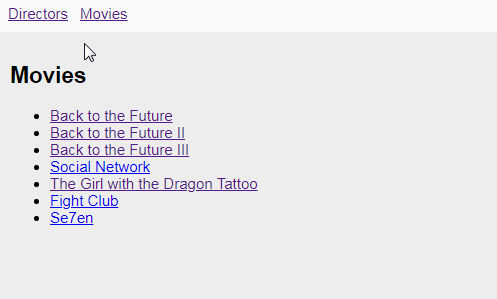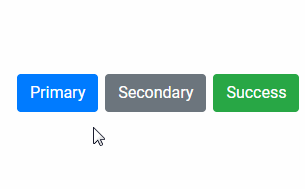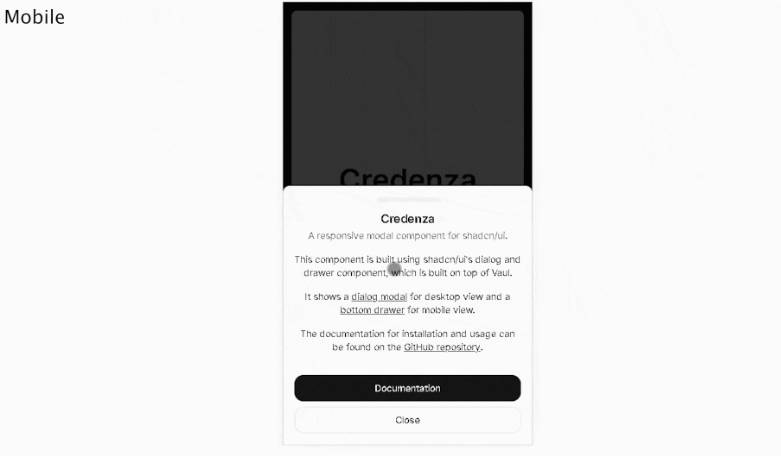react-router-modal-gallery
This is a simple package for the react-router to implement url based modals. It is mainly based on the Modal Gallery example on React Training/React Router with a little bit of enhancing and some reusable components like ModalRoute, ModalLink and ModalSwitch.
Besides all of the implementation is made by using JavaScript, the components that you can use has TypeScript definitions in index.d.ts file. Thus, you can use them in your TypeScript projects.
You may use this package if you want to render modals like Twitter, Facebook or Pinterest style.
It will handle the history and location by default and you can use any modal component from your favorite UI library (material-ui, ant-design etc.)! You can find an example for material-ui at ./demo folder.
Installation
To install:
npm install --save react-router-modal-gallery
This assumes you are using npm as your package manager.
Basic Usage
The most basic usage may be like this:
//...
import { ModalSwitch, ModalRoute } from "react-router-modal-gallery";
//...
<ModalSwitch
renderModal={({ open, redirectToBack }) => (
<MuiModal open={open} scroll="body" onExited={redirectToBack}>
<ModalRoute
defaultParentPath="/movies"
path="/movies/:id"
component={Movie}
/>
<ModalRoute
defaultParentPath="/directors"
path="/directors/:id"
component={Director}
/>
</MuiModal>
)}
>
<Route exact path="/movies" component={Movies} />
<Route exact path="/directors" component={Directors} />
<Route path="/movies/:id" component={Movie} />
<Route path="/directors/:id" component={Director} />
{/* If you want to redirect on 404 not found */}
<Route path="*" render={() => <Redirect to="/movies" />} />
</ModalSwitch>;
//...
//...
Note: MuiModal is just a custom material-ui modal that used for this example. You can use any modal you want. This package doesn't provide any modal component. You can render the modal the way you want inside the renderModal prop, by using render prop pattern.
If the user opens /movies/1 directly, no modal will be opened. A page will be shown. But if you define a ModalLink and route to /movies/1, it will open inside the modal that you have defined inside ModalSwitch's renderModal prop.
Basically, a normal page will be rendered on initial render. But when you redirect to a movie from another route by using ModalLink, it will be rendered inside a modal and the page that you opened the modal will stay behind the it.
When the modal is closed, you will be redirected to the parent path that you opened the modal. redirectToBack function doesn't use history.push if you don't open the modal on initial render. It basically goes back to the last route that isn't a modal route.
ModalLink
When you want to redirect a user to a route which has a modal, you may use the ModalLink component.
For example:
//...
import { ModalLink } from "react-router-modal-gallery";
//...
<ModalLink to=`/movies/${movie.id}`>{movie.name}</ModalLink>
//...
//...
When you click this link, it will attach the required modal:true state to to prop. Thus, ModalSwitch and ModalRoute will automatically handle the modal.
Rendering Modals on Initial Render
If you want to open modals on the initial render like Twitter does, you should insert ModalRoute components to children of ModalSwitch. For example;
//...
import { ModalSwitch, ModalRoute } from "react-router-modal-gallery";
//...
<ModalSwitch
renderModal={({ open, redirectToBack }) => (
<MuiModal open={open} scroll="body" onExited={redirectToBack}>
<ModalRoute
defaultParentPath="/movies"
path="/movies/:id"
component={Movie}
/>
<ModalRoute
defaultParentPath="/directors"
path="/directors/:id"
component={Director}
/>
</MuiModal>
)}
>
<Route exact path="/movies" component={Movies} />
<Route exact path="/directors" component={Directors} />
<ModalRoute
defaultParentPath="/movies"
path="/movies/:id"
component={Movie}
/>
<ModalRoute
defaultParentPath="/directors"
path="/directors/:id"
component={Director}
/>
{/* If you want to redirect on 404 not found */}
<Route path="*" render={() => <Redirect to="/movies" />} />
</ModalSwitch>;
//...
//...
With this way, if a user enter a modal url directly like .../movies/1, a modal will be rendered directly and the path you defined at defaultParentPath will be rendered in the background.
When the user closes the modal, it will redirect you to the path that you defined at defaultParentPath prop.
Advanced Example
Actually, this has nothing advanced but it looks a little more decent. You may use a structure like route-config and remove the duplication of ModalRoute component in both modalRoutes prop and ModalSwitch children.
//...
import { ModalSwitch, ModalRoute } from "../../src";
const routes = [
{
exact: true,
path: "/movies",
component: Movies
},
{
defaultParentPath: "/movies",
modal: true,
path: "/movies/:id",
component: Movie
},
{
exact: true,
path: "/directors",
component: Directors
},
{
defaultParentPath: "/directors",
modal: true,
path: "/directors/:id",
component: Director
},
{
path: "*",
render: () => <Redirect to="/movies" />
}
];
const modalRoutes = routes
.filter(route => route.modal)
.map(route => <ModalRoute key={route.path} {...route} />);
const Routes = () => (
<ModalSwitch
renderModal={({ open, redirectToBack }) => (
<MuiModal open={open} scroll="body" onExited={redirectToBack}>
{modalRoutes}
</MuiModal>
)}
>
{routes.map(route =>
route.modal ? (
<ModalRoute key={route.path} {...route} />
) : (
<Route key={route.path} {...route} />
)
)}
</ModalSwitch>
);
export default Routes;





